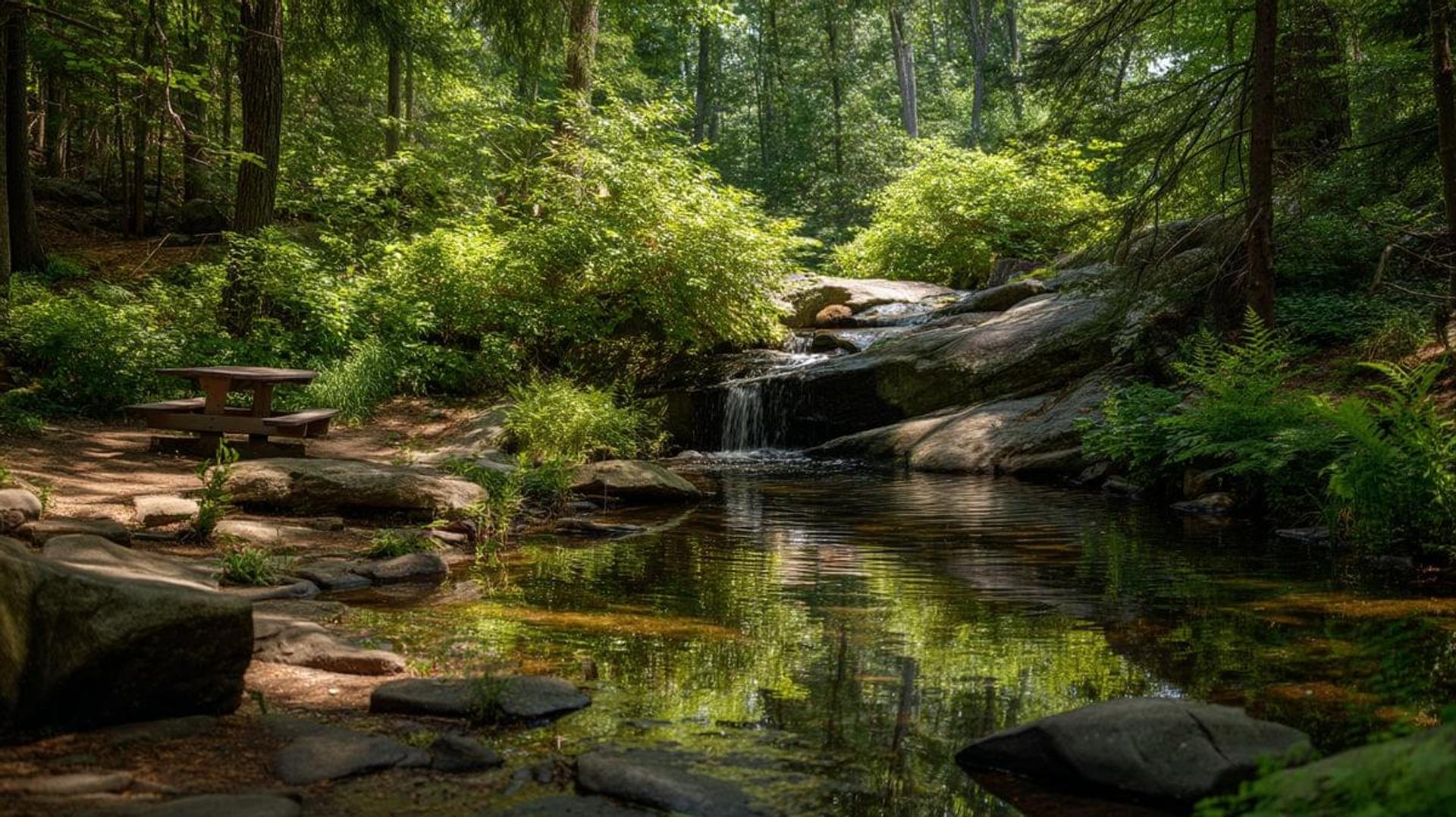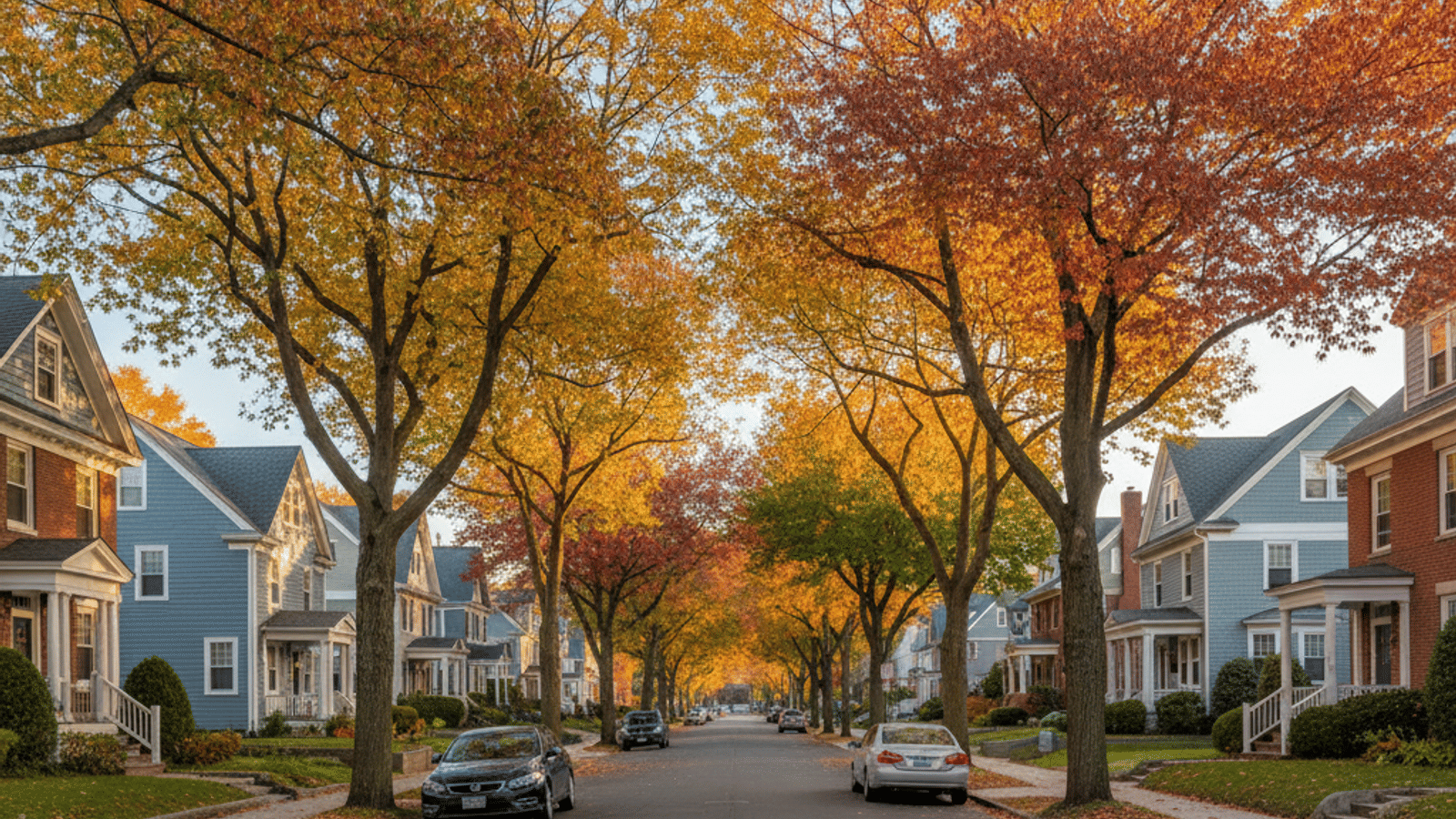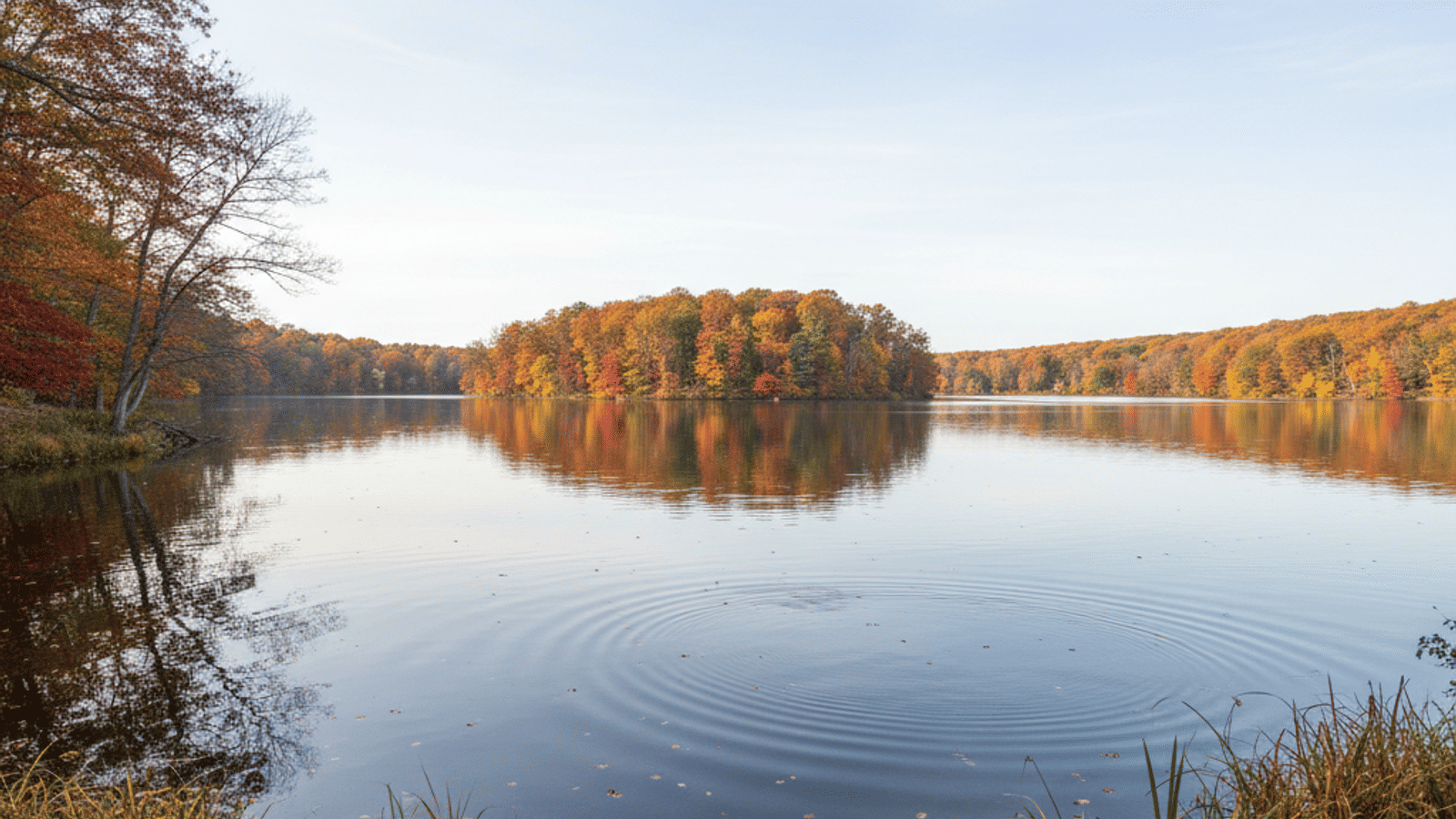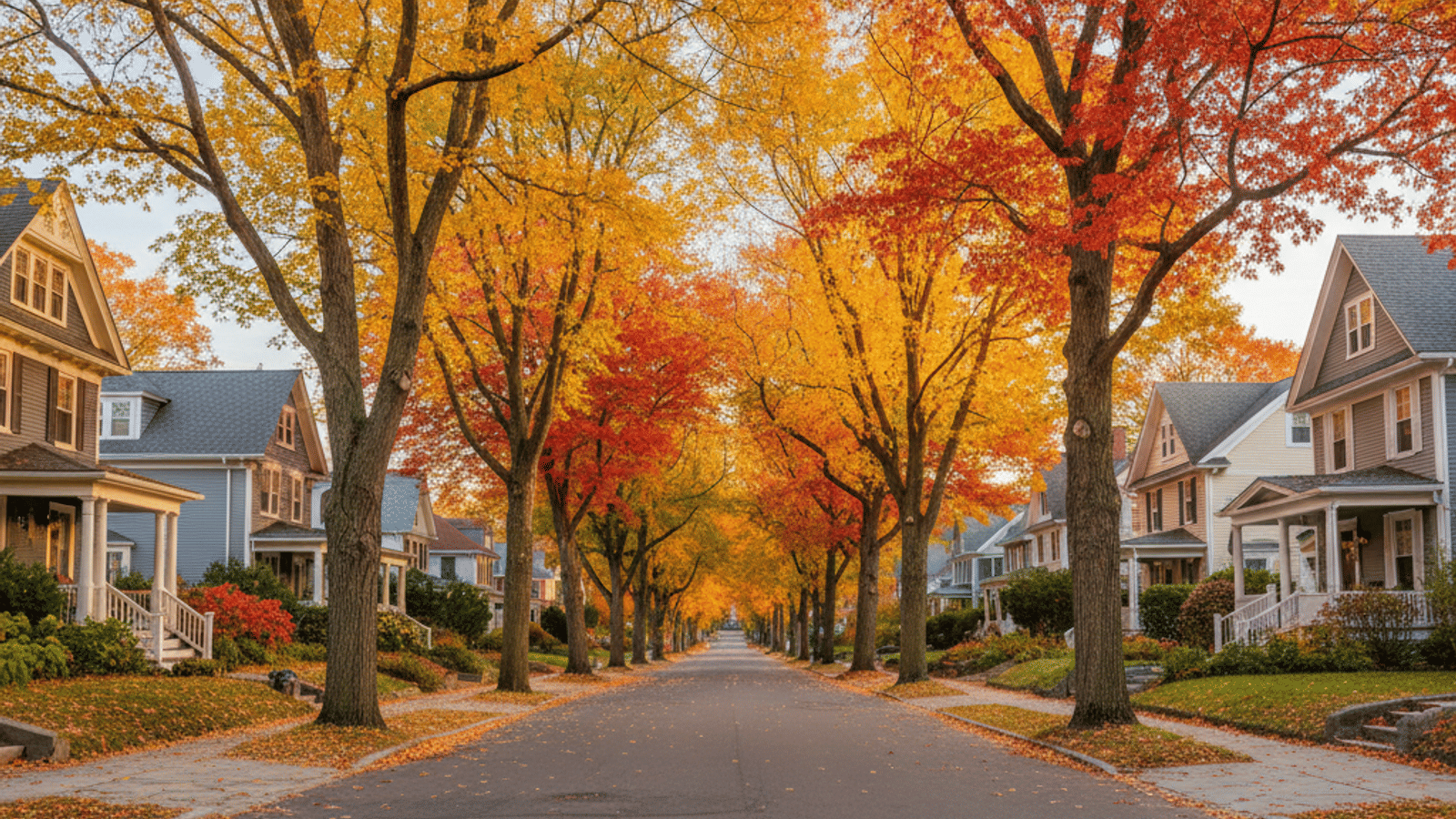Belmont may sit just eight miles west of downtown Boston, yet the suburb still feels like a close‑knit neighborhood where you can swap city sirens for birdsong without sacrificing a good latte.
Ask any local and they’ll tell you the big draw is balance: historic town greens, cozy eateries, and enough nature preserves to keep even restless kids busy on a long weekend.
Whether you’re scouting homes for sale in Belmont or lining up a Saturday trip, this guide rounds up the very best things to do in Belmont—no fluff, just honest, boots‑on‑the‑ground advice.
Explore Belmont’s Outdoor Beauty
Beaver Brook Reservation
Set on nearly 60 acres straddling Belmont and Waltham, Beaver Brook blends urban convenience with a wild streak.
The south section lines up a free spray deck that runs 8 a.m. to 8 p.m. from late May into September, plus shaded picnic tables where you can spread a fresh baguette from Belmont Center and watch the little ones tear around two playgrounds.
Trails loop past a tiny waterfall, so bring a camera if you love a good view.
Lone Tree Hill Conservation Land
A short walk from Belmont High School, Lone Tree Hill serves up gentle switchbacks, a breezy meadow, and enough wildlife sightings to satisfy weekend birders.
The climb tops out at a grassy hill that’s perfect for a sunset picnic and a sweeping look toward the Boston skyline. Expect an easy mile‑long loop; pack bug spray in summer.
Rock Meadow Conservation Area
Bordering the Western Greenway, Rock Meadow’s open fields and community garden plots make it feel more Vermont than Greater Boston. You’ll share the trail with dog‑walkers, bikers, and the occasional horseback rider while goldfinches dart over the tall grass.
In late June, the meadow glows with wildflowers, a prime Habitat for monarch butterflies.
Discover Belmont’s Historic and Cultural Attractions
Payson Park Music Festival
Every season, the town spreads blankets on Wednesday nights for the Payson Park Music Festival, a free concert series rolling from mid‑June through early September.
Classic rock cover bands, jazz quartets, and folk ensembles set up on a modest gazebo while food trucks sling lobster rolls. Bring cash for donations; proceeds keep next year’s music alive.
Belmont Historical Society & Claflin Room
Tucked inside the public library, the Claflin Room reads like Belmont’s attic—Civil War uniforms, antique postcards, and a first‑edition town atlas line the shelves.
Volunteers happily steer you toward old photos of Belmont Center trolley tracks or explain how the town once shipped ice to India. It’s open select afternoons, so call ahead before you visit.
Homer House
Painter Winslow Homer spent his teenage summers sketching here, and the 1853 Italianate mansion still anchors Pleasant Street with wraparound porches and clapboard grace.
Docents unpack stories of Homer’s early coastal studies, then walk you through parlors staged in mid‑1800s style.
The Belmont Woman’s Club hosts teas and art exhibits on select Sundays.
Family‑Friendly Activities
Belmont Public Library
Beyond endless picture books, the library throws down kid‑centric story hours, Lego classes, and outdoor readings at the Farmers’ Market each Thursday at 4 p.m.
Play mats keep toddlers busy in a safe environment, while parents sip coffee from the in‑house kiosk. Check the online calendar for STEM workshops and author talks.
Underwood Pool
Massachusetts’ oldest outdoor municipal pool got a full facelift in 2015 and now boasts zero‑entry shallows, lap lanes, and a small splash pad. Lifeguards run weekly “big slide” races and low‑key birthday parties, and there’s a shady lawn for parents who’d rather lounge with a paperback. Summer hours stretch 8 a.m. to 8 p.m.
Local Parks and Playgrounds
Grove Street Playground brings tennis courts and wide open space for pickup soccer, while Pequossette Park delivers towering swings under tall oaks—ideal if you have preschoolers burning energy.
Both spots lie within a short bike ride of Belmont Center ice cream, so bribes are easy.
Shop and Dine in Belmont Center
Unique Local Shops
Start at Belmont Center, where shopfronts spill onto brick sidewalks. Flip through new releases at Belmont Books then duck into its Black Bear Café for flaky croissants served all day.
Across the street, A Chocolate Dream hand‑rolls truffles so rich you’ll need to share.
Best Places to Eat and Drink
Dinner might mean house‑made tagliatelle at Il Casale, a restaurant earning rave reviews for nonna‑level red sauce.
Prefer casual? Grab gooey Greek‑style pizza at Nick’s Place II by the commuter tracks, then cap the evening with Oreo‑chunk ice cream at Rancatore’s, a local institution since 1985.
Seasonal Events and Community Happenings
Belmont Farmers’ Market
Thursday afternoons from June through October, the town‑center parking lot morphs into a cornucopia of heirloom tomatoes, pasture‑raised meats, and small‑batch jams.
SNAP benefits double, live music sets a mellow beat, and librarians host storytime under a striped tent—proof that an event can nourish body and mind.
Holiday Celebrations
Fall brings Town Day, complete with dunk tanks, craft booths, and a climbing wall that draws teens two towns over.
December’s tree lighting floods Leonard Street with carols, cider, and enough twinkle lights to rival any New England postcard.
Daytrips from Belmont
Planning Your Trip to Belmont
Catch the MBTA’s Fitchburg Line from North Station and you’ll roll into Waverley Square in under twenty minutes, or hop the 73 bus from Harvard Square if you’d rather stay above ground. Most downtown attractions sit within a one‑mile stroll.
Best Time of the Year to Visit
Late May to early October pairs mild temps with a packed season of concerts and outdoor film nights. If foliage sets your heart racing, early October paints Lone Tree Hill in sugar‑maple reds, arguably the best view in New England without driving north.
Where to Stay
Belmont itself leans residential, so travelers typically crash at studios in nearby Cambridge or book a hotel like the Studio Allston or Hyatt House Burlington—both within a 15‑minute Lyft.
In Conclusion
From broad landscapes to small‑town café chatter, Belmont turns everyday errands into mini‑adventures. Next time you explore the area, carve out space to roam a shaded park, sip espresso in Belmont Center, or savor open‑air culture under July stars.
After all, the best attractions aren’t always flashy, they’re the ones waiting right outside your doorstep today.
FAQ’s About Things to Do in Belmont
Is Belmont good for outdoor lovers who want easy trails?
Absolutely. Rock Meadow, Lone Tree Hill, and Habitat offer gentle trail networks through meadow and forest, so you can squeeze a nature fix between errands. Most routes measure under two miles round‑trip, making them friendly for first‑time hikers or families pushing strollers, especially in late spring when the meadow wildflowers bloom.
What are the top family activities on a rainy day?
Start at the public library’s children’s wing for puppet storytime, then pop into Rancatore’s for sundaes. If everyone still has energy, the Apple Cinemas Fresh Pond complex, two miles away, screens the latest movie releases with roomy seats, so restless kids can wriggle without side‑eye.
Where can I hear live music without driving into Boston?
From mid‑June through early September, the free Payson Park Music Festival sets up lawn chairs every Wednesday at 6:30 p.m. Styles range from Beatles tributes to Cajun zydeco, and there’s always space to dance barefoot under the stars. Bring cash for the raffle that funds next year’s lineup.
Does Belmont have any standout dining spots?
For date night, grab a corner table at Il Casale, where handmade pasta mingles with slow‑braised short ribs.
Craving comfort? Nick’s Place II tosses dough for gooey pizza wraps, and Rancatore’s scoops inventive ice cream like fresh‑mint Oreo. The walkable cluster of eateries in Belmont Center means you can park once and sample three courses in one evening.
Are there educational programs for adults?
The Belmont Historical Society runs rotating exhibits and lecture classes in the Claflin Room, diving deep into topics like colonial stone walls or 19th‑century textile mills.
Meanwhile, Mass Audubon’s Habitat sanctuary hosts seasonal workshops on bird identification, pollinator gardens, and climate‑smart land stewardship—ideal if you want to blend learning with fresh air.






